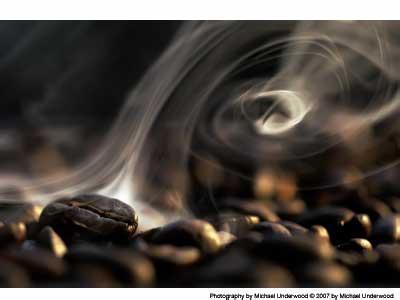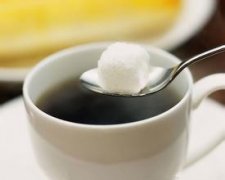The five flavors of coffee the bitterness and sweetness of coffee

Coffee's color, aroma, and taste are the result of complex chemical changes that occur through the roasting process. Therefore, raw beans must undergo appropriate chemical procedures to achieve the most balanced state of its essential ingredients in order to be considered the best baked beans. Coffee aroma changes with heat, so roast time should be as short as possible, and heat control can make coffee beans produce effective chemical composition of the minimum temperature, that is, the shortest process time and heat, so that coffee beans produce the most suitable composition ratio.
Aroma is the life of coffee quality, but also the best performance of coffee production process and roasting technology, production climate, elevation, variety, refining treatment, harvest, storage, consumer country roasting technology is appropriate, etc., are the conditions that control coffee bean aroma. The aroma of coffee was proved to be composed of hundreds of volatile components such as acids, alcohols, aldehydes, ketones, esters, sulfur compounds, phenols and nitrogen compounds. Roughly speaking, fat, protein, and sugar are important sources of aroma, while lipid components will blend with the bitterness and sourness of coffee to form a smooth taste. Therefore, the disappearance of aroma means that the quality is poor, and the relationship between aroma and quality is extremely close.
The basic taste of bitter coffee is the bitter strength and bitter texture. The raw beans contain only a very small amount of bitter ingredients, and then the caramelization and carbonization of sugar, part of starch and fiber caused by roasting produce the most symbolic bitter taste of coffee. Caffeine, one of the bitter components, is also an important substance that shows the pharmacological characteristics of coffee. The content varies according to its type, refinement and roasting degree. If the roasting temperature is high, the content will decrease. Therefore, the lighter the roasting, the stronger the pharmacological effect of caffeine, and the weaker the roasting. Generally speaking, the coffee with strong sour taste will be weak in bitterness, while the coffee with bitter taste as the main body is easy to appear insufficient in sourness, so the proportion of sour and bitter gives coffee a space for development in taste. Bitterness mainly depends on the roasting time and the strength of the fire, whether the fire is appropriate or not, but it will also be affected by the brewing temperature and brewing time, so the bitter taste of coffee brewed is advanced and refreshing. In addition to the good quality of raw beans, it is more necessary to have rich knowledge and technology from roasting to brewing.
Acidity is certainly affected by the quality and variety of green beans. In terms of variety elevation, coffee grown in the high ground is more acidic than coffee grown in the low ground, and beans freshly harvested are more acidic than beans aged for a while. Different types of acid, its increase and decrease changes are also different, generally lighter baked beans, sour more abundant, baked deeper, sour more scarce. Freshly harvested beans, good quality, high moisture content, if the appropriate heat to produce moderate sour, will make coffee taste better, let people feel more depth.
Strong alcohol and sweet generally we use strong alcohol to express coffee ripe, aromatic alcohol, strong taste. The unique sweetness of high-grade coffee is related to bitterness, so the refreshing taste of the superior taste must be sweet. During baking, some of the carbohydrates such as sucrose and glucose caramelize, and the rest form a sweet taste, a moderately sweet product that is easily lost during baking and brewing if heat treatment is excessive.
Important Notice :
前街咖啡 FrontStreet Coffee has moved to new addredd:
FrontStreet Coffee Address: 315,Donghua East Road,GuangZhou
Tel:020 38364473
- Prev

The concept of Specialty coffee Fine Coffee
Coffee producing countries have a unique set of standards for the classification and evaluation of coffee, which can be used as indicators of international sales. In recent years, coffee consuming countries have begun to require the introduction of new evaluation criteria "the concept of boutique coffee". Previous coffee evaluation criteria 1. The quality is highly evaluated by the place of origin 2. The quality is evaluated by sieve 3. Evaluate the quality according to the proportion of screen and defective beans.
- Next

Cafe de flore and les deux maggots, the century-old French coffee shops.
Everyone knows that there are many cafes on the streets of France, especially in Paris: the most famous are Caf de flore and les deux maggots, two century-old shops in my avatar on the Rue Saint-Germain. What I am going to tell you today is not how fragrant the coffee is in these two old shops, which is not the main reason why these two coffee shops are so famous so far; nor are they.
Related
- Beginners will see the "Coffee pull flower" guide!
- What is the difference between ice blog purified milk and ordinary milk coffee?
- Why is the Philippines the largest producer of crops in Liberia?
- For coffee extraction, should the fine powder be retained?
- How does extracted espresso fill pressed powder? How much strength does it take to press the powder?
- How to make jasmine cold extract coffee? Is the jasmine + latte good?
- Will this little toy really make the coffee taste better? How does Lily Drip affect coffee extraction?
- Will the action of slapping the filter cup also affect coffee extraction?
- What's the difference between powder-to-water ratio and powder-to-liquid ratio?
- What is the Ethiopian local species? What does it have to do with Heirloom native species?

